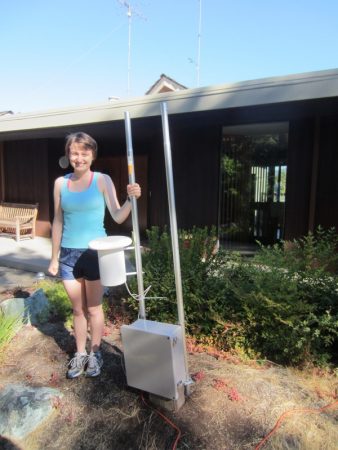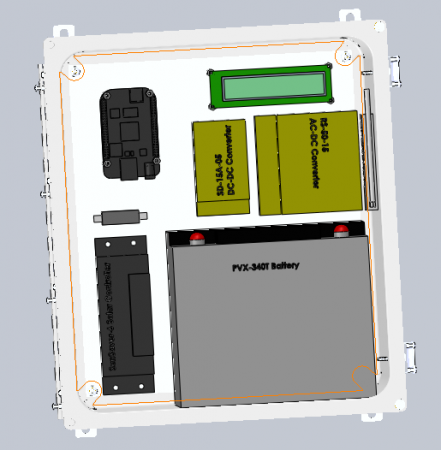QuakeFinder, the Humanitarian R&D division of Stellar Solutions Inc. QuakeFinder collects electromagnetic emissions using magnetometers dug in the ground and ion emissions using ion sensors mounted above the station in the air that can hopefully be used to predict earthquakes. However, magnetometers are very sensitive to any sort of electromagnetic noise, including lightning, cars, and trains, but ion sensors can still collect data in these contaminated areas.
I designed the enclosure layout and power system for the MiniStation, a small ion sensor station that can be built and installed by high school students in their own backyards. This data will supplement the magnetometer data along major faults and provide a more complete picture of the activity in those faults. The small station must be able to withstand all kinds of weather, from rain to dust, and transmit data to QuakeFinder wirelessly. As part of the project, I soldered the custom PCB circuit board, modeled the case in SolidWorks to determine the best way to fit the parts together, specified and ordered parts, and wrote the user manual with educational assembly instructions. To test the product, I had my mom follow the assembly instructions from start to finish, and she successfully installed the entire system in my front yard and was able to collect data. The MiniStation is now in production and is being sent to schools in the Bay Area.



